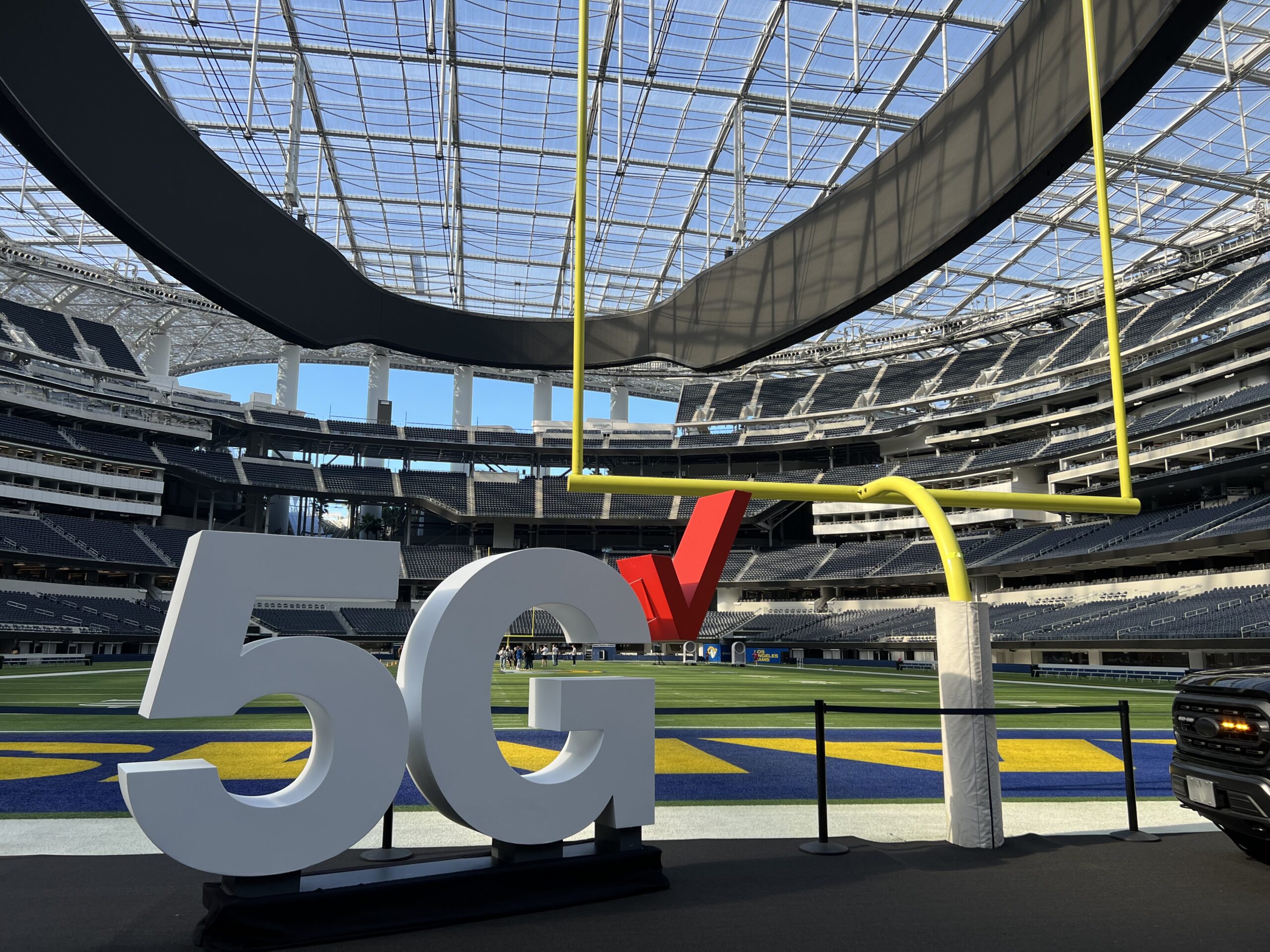The Super Bowl serves as a good test of a wireless network. After all, tens of thousands of people are on their phones, live streaming, posting on Instagram, and sharing videos with their friends. Verizon on Monday said it handled 52.34 terabytes of data at the big game.
To put that in perspective, that much data is the equivalent of 3.3 years of playing HD video continuously.
The amount of data consumed during the game rose 9.4% over the prior Super Bowl, which saw 47.8 TB of data. The company added that users at Allegiant Stadium also saw 3.8x faster download speeds and 3.1 faster upload speeds than its rivals.
These kinds of high-profile events are important for burnishing the network quality reputation for carriers. Verizon Wireless has long maintained the perception that its coverage was a step above the competition, but it’s ceded much of its leadership position to T-Mobile over the last few years. For its part, T-Mobile also invested a lot into upgrading parts of Las Vegas — including Allegiant Stadium — for the big game.
Of course, it’s much easier to ensure coverage is strong in a contained facility such as Allegiant Stadium, especially one in which you have access to the infrastructure and a tenant that’s eager to ensure fans in attendance maintain speedy coverage. Verizon is also able to focus its so-called millimeter wave spectrum, or radio airwaves that operate at a super-high frequency and is essentially a giant pipe of data. It uses the term “UltraWideband” when referring to that faster version of its network.
The company said that engineers had installed 250 5G millimeter wave radios in the arena, and that 70% of customers used that frequency, up from 63% last year, when the big game was held at State Farm Stadium in Glendale, Arizona.
These investments aren’t cheap. Verizon spent nearly $120 million to build out its infrastructure at SoFi Stadium, Massimo Peselli, chief revenue officer for Verizon’s business group, told Cord Cutters News last fall. Allegiant Stadium likely commanded a similar investment.
Millimeter wave spectrum has terrible range and is susceptible to interference, which is why you don’t see it everywhere. It’s largely focused on central hotspots like New York’s Times Square or venues like Allegiant.
Image credit: Roger Cheng/Cord Cutters News
Please follow us on Facebook and X for more news, tips, and reviews. Need cord cutting tech support? Join our Cord Cutting Tech Support Facebook Group for help.

